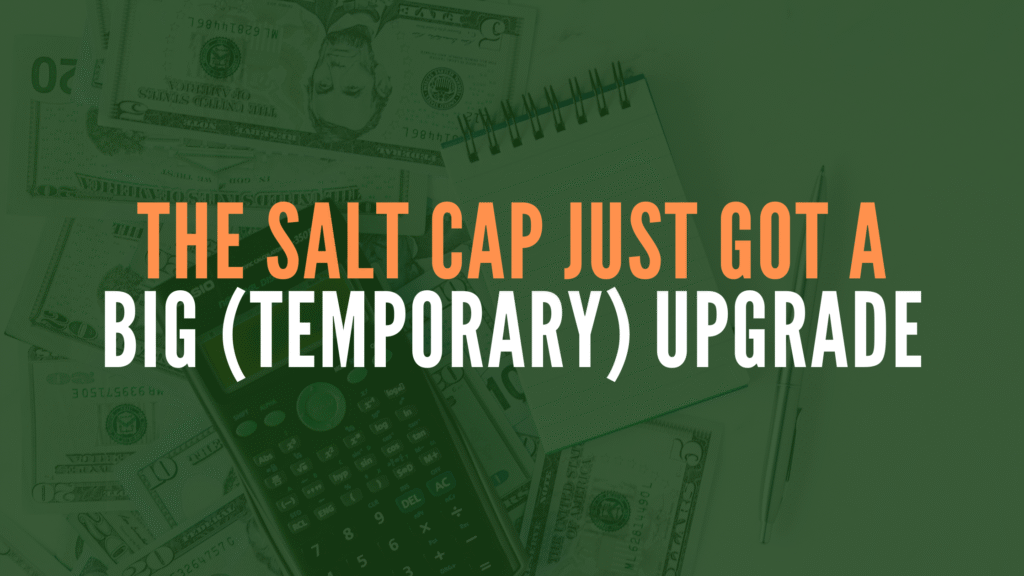If you’ve ever felt frustrated by the $10,000 cap on state and local tax (SALT) deductions, you’re not alone. For years, that cap has been a thorn in the side of homeowners and taxpayers in high-tax states. But starting in 2025, there’s finally some breathing room.
Thanks to the One Big Beautiful Bill Act (OBBBA), the SALT cap is getting a temporary boost and it could mean thousands more in deductions for you.
Here’s the good news:
- If you’re married filing jointly, the cap increases to $40,000.
- If you’re married filing separately, you can deduct up to $20,000.
These higher limits will last from 2025 through 2029 and will even adjust for inflation beginning in 2026. But unless Congress steps in, the cap will snap back to $10,000/$5,000 in 2030.
But there’s a catch:
This bigger deduction doesn’t apply to everyone. If your modified adjusted gross income (MAGI) is on the higher side, the deduction starts phasing out:
- At $500,000 for joint filers
- At $250,000 for married filing separately
And here’s the kicker: the phaseout reduces your SALT deduction by 30% of your MAGI above the threshold, with a floor of $10,000 (or $5,000). Translation? If your MAGI hits $550,000, your deduction isn’t $40,000, it drops down to $25,000.
Planning Tips to Maximize Your Deduction:
This is where some smart tax planning comes in handy. To keep your MAGI in the sweet spot and get the most out of the new rules, you might consider:
- Spreading capital gains over multiple years instead of taking them all at once
- Breaking up Roth IRA conversions into smaller pieces across different tax years
- Taking advantage of your state’s SALT workaround (if available) by paying SALT at the entity level through your pass-through business
Oh, and don’t forget, you can still choose to deduct sales taxes instead of income taxes. This can be especially useful if your income taxes are low, but your sales or property taxes are eating up your budget.
This temporary boost is a big deal for taxpayers who’ve been limited by the $10,000 cap. While it’s not permanent, it does open up some opportunities between 2025 and 2029 to manage your taxes more strategically.
If your income is close to the phaseout range, now’s the time to think ahead and work with a tax pro on strategies that help you qualify. Because once 2030 hits, we may all be back at square one.

